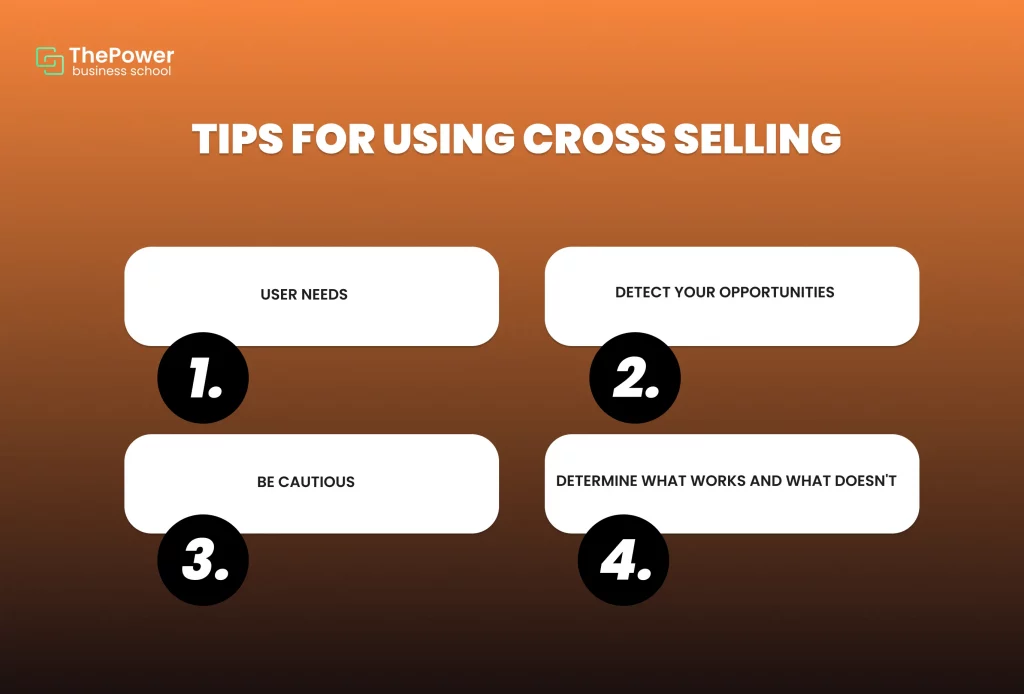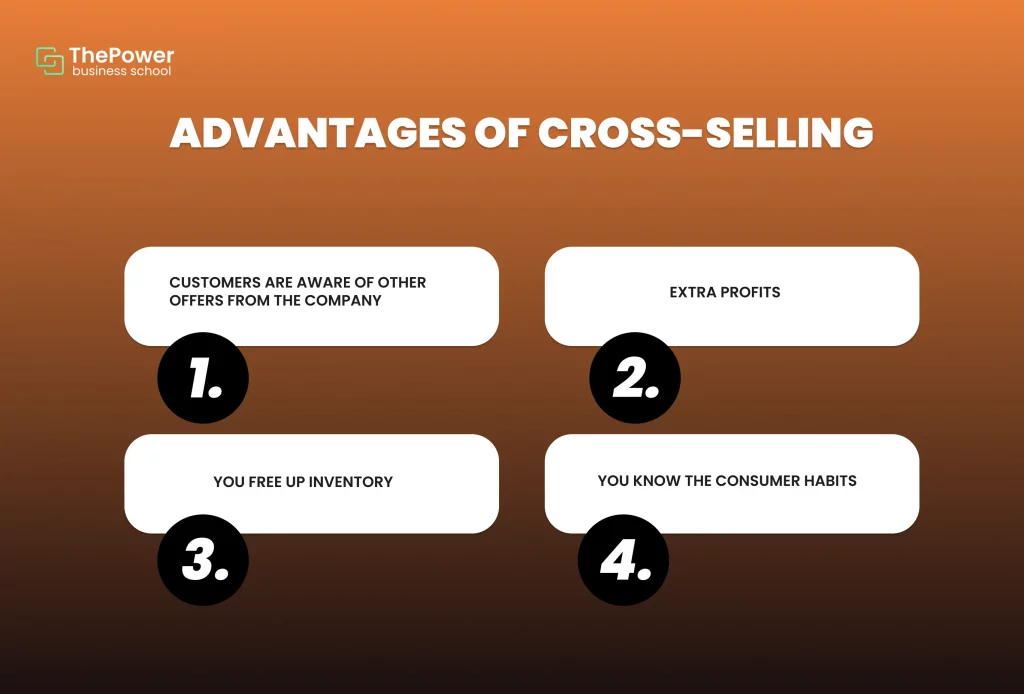How many times have you left home in order to buy a specific product and upon returning home you realized that you brought two or three extra ones? Yes, it has happened to all of us and it’s because we were taking part in a Cross Selling strategy.
Now it’s time for you to apply it in your business, because there’s nothing better than having a customer take an extra item and be happy to have gotten this offer.
Get ready to double your turnover in the coming months thanks to the strategy that never goes out of fashion:
Table of Content
What is cross selling?
Let’s start by defining cross selling. It is a technique in which you offer a complementary product to the initial purchase made by the user, so that you can increase the total amount of the sale.
The truth is that it’s something very interesting because it can happen in any situation. Imagine that you go to your trusted store to buy a new cell phone and you want the battery to last long enough.
Then, just when you are about to pay, the salesperson tells you that you can buy a power bank so that you will never run out of battery in the middle of work.
What would you do at that moment? Probably buy the alternative to ensure maximum durability. That’s what cross-selling is all about, maximizing a sale through items that complement the initial purchase.
Of course, it’s not about selling for the sake of selling, but recommending a product to the customer that really connects with their needs. This is the only way to take advantage of the potential of this strategy.
Tips for using cross selling
Implementing a cross selling strategy is one of the best decisions you can make. However, it is not as simple as it seems, since you have to take into account both the customer and the product itself.
Let’s take a closer look below:
1. User needs
First of all, it’s essential to evaluate the customer’s needs in order to offer him the best option and thus complement his purchase in the best way.
How is this achieved? Through a good definition of buyer persona that explains in detail the characteristics of the target customer and what their situation is at that moment.
This way you will serve your customer just as he deserves and he will leave happily. Therefore, if he is looking for a cell phone to take the best pictures, in addition to offering him the right model, you can recommend a selfie stick to capture those moments that remain in the memory.
2. Detect your opportunities
Not only do you have to know your customer, but you have to know yourself. You have to evaluate the characteristics of your customers and your products to determine what are the real opportunities you have to satisfy their needs and improve their quality of life.
You can ask yourself questions such as the following:
- What does my product need to work in the best way?
- What are the consequences if I don’t buy it?
This way you will understand how the product works and what it needs to exploit its qualities to the maximum.
An example would be a store that sells printers and office supplies.It would not be enough to sell just the equipment, but also the ink and the paper itself for the customer to install your product and start working.
3. Be cautious
One of the most common mistakes made when trying to cross-sell is to insist on a product that the customer does not need at all.
Remember that cross-selling is an alternative to incorporate an additional item to a purchase that has already been closed. In this sense, do not insist more than necessary or offer more than one product because the consequences could be very negative.
4. Determine what works and what doesn’t
It’s true that the study of possibilities is very important, but sometimes you must let yourself be guided by experience. If you see that something works, stick with that strategy until you see customers start to reject it.
At the end of the day, each client is different, so what works for one may not work for another. Don’t forget that.

Differences between cross selling and up selling
One of the biggest confusions in the sales world is the relationship between the concepts of cross selling and up selling. Many people think that they are the same thing and that’s where the problems begin.
Cross-selling is a cross-sale, while up-selling is an additional sale. So, although both are related to the fact of offering an alternative product in the customer’s buying process, both differ in the characteristics of the product and in the intention of the proposal.
Thus, in cross-selling, a service is offered to complement the product chosen by the customer. On the other hand, with up-selling, a similar item is recommended, but with superior properties.
In other words, when you focus on up-selling you are looking to sell a better product to the user, since the one he is about to buy is a fairly basic model.
Types of cross selling
Let’s see now what is the current classification of cross selling:
1. Voluntary cross selling
First we have voluntary cross-selling, which is one of the most common nowadays. Here the user is free to choose that complementary item without affecting the price or availability of the main product.
A perfect example would be a bicycle. We know that it is a highly demanded piece of equipment both for transportation needs and for exercising in our leisure time. In this sense, when purchasing it, it’s very likely that the seller will recommend a helmet to protect your integrity.
However, it’s not mandatory and will not affect the initial purchase price, so you can rest assured.
2. Conditional cross selling
Secondly, there is conditional cross-selling, which seeks to make discounts to the final purchase price, but for that you will have to buy the complementary item.
In other words, the product will be cheaper only if you buy the bicycle together with the helmet, if we continue with the previous example. Therefore, it can be applied to different segments, from fast food, medicines or even service companies.
3. Mandatory cross selling
Lastly, we have mandatory cross-selling. It’s much less frequent than the previous ones and is used only when the seller is in a very advantageous position.
A perfect example is bank loans. If you are approved, it’s very likely that you will have to contract other services to receive all the benefits of the product.
Examples of cross selling strategies
Are you interested in applying cross selling in your company? Discover some cases of companies that have successfully applied it and have had very good results in this regard:
1. Amazon
We start with the world leader in e-commerce. One of the keys to its success lies in the fact that they apply this strategy when they are about to sell a product:
Best of all, they do it in a very subtle but powerful way. They show you the following:
- Customers who purchased this product also purchased….
- Products that are usually bought together…
It may or may not work, it all depends on the customer’s budget and needs. What is certain is that in the long run it has been a fundamental part of the large amount of money that the company turns over annually, so you should take it into consideration.
2. Ale Hop
We also have the case of Ale Hop, a Spanish brand that sells different types of gifts that has managed to position itself in different parts of the European continent.
One of the reasons why it has grown so much is because they have relied on cross-selling, so much so that when you arrive at any of their stores they give you a bag to keep your purchase. It has a value of 1 euro and works as a complement to any purchase you make.
Think about it, since the cost of the bag is so low, almost anyone will buy it, so if 500 people visit the store in one day, it’s very likely that more than 80% of the users will accept this offer.
Advantages of cross selling
There are many advantages that cross selling offers on a daily basis. Some of them are:
1. Customers are aware of other offers from the company
First of all, with cross selling you have the possibility of making other products and offers that you have in your company known.
In many cases, customers make occasional purchases only because they do not know that there are other items that can solve their problems. However, the problem is that many merchants do not know how to promote their offers and that’s where this strategy appears.
Therefore, we recommend that you gradually promote this practice to improve the visibility of your products. The results will surprise you.
2. Extra Profits
How important it is to reap extra profits when building a business. It’s true that each sale gives you a profit margin, but that profit can increase if you add a product to the shopping cart.
How do you do it? Through cross-selling. It’s just a matter of doing it at the right time and with the right products so you can see how it all starts to work.
3. You free up inventory
On the other hand, we cannot forget the fact that with cross-selling we manage to move that inventory that little by little accumulates in our warehouse.
Having too much stock of products can be counterproductive, especially if space is limited or we have items with expiration dates. The problem is that not all sales strategies generate immediate results and that’s where the name cross selling comes in.
What are you waiting for to apply it in your business?
4. You know the consumption habits
Knowing the consumption habits of your target audience is crucial to apply the right strategies that will allow you to solve their needs.
A very practical way to do this is through cross-selling, since you have the possibility of adding alternative products that improve the customer’s experience. There you will see if people are interested in that product or if the need is changing over time.
The important thing is to be aware of their changing habits in order to modify the strategy before it is too late.

In which opportunities can I apply cross selling?
There are many situations in which we can apply cross selling:
1. Complementing a service
The key to take advantage of this trend is to look at our inventory as a series of products that complement each other. Then, if you combine the right ones, you will solve several user’s problems and they will be 100% satisfied.
Dedicate yourself to solving needs and you will see how everything starts to improve.
2. Improve the customer experience
User experience is a key factor that allows you to sell several units of a product without forcing anything.
If we go back to the example of the bicycle, it’s not the same to use it with a helmet than without it, since its safety will be affected. The same happened with the cell phone and its power bank.
That’s what we mean, focus on each cross-sell to improve their user experience and the results will come sooner rather than later.
3. Help the user take advantage of some opportunities
It’s very beneficial when the customer does not know the product well or is in the store for the first time. With cross selling you will demonstrate everything he can do with at least two items and he will feel much more confident.
It’s incredible how many opportunities cross-selling gives us when it comes to managing a business. Remember that it’s not about selling for the sake of selling, but about understanding the customer’s needs in order to offer a complement that improves their experience.
Are you ready to apply cross selling? We’ll read you in the comments.






Thanks for the article!